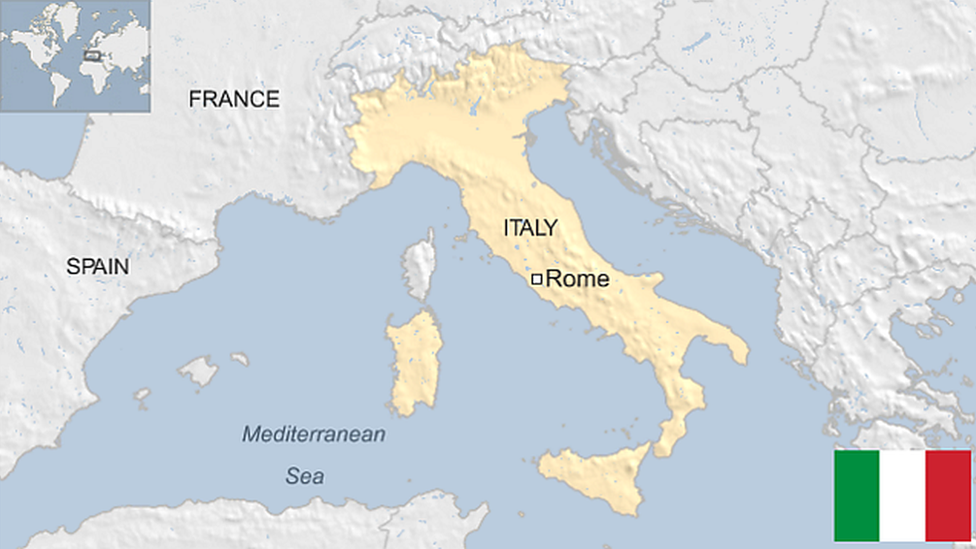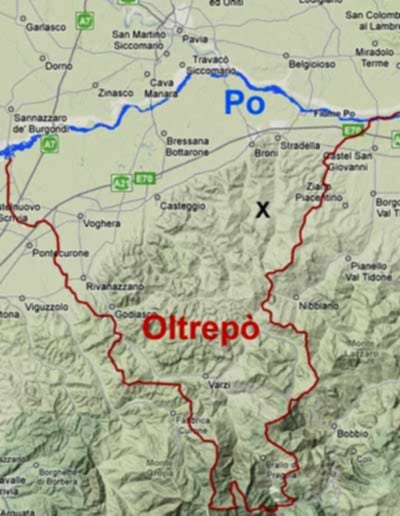
What is the Slow Wine?
Born in Bra, his skillset was proper when he and his colleagues formed the Friends of Barolo Association. The group produced a catalog of wines, including data sheets with a narration of each label that eventually became the Vini d’Italia guide.
Wine Enters Politics
In Italy, Petrini viewed the emerging American fast-food movement in horror.
He saw the decline threatening local food traditions, and the appreciation of “good food” was disappearing. In retaliation, he started a counteroffensive in Italy (1986), pushing against opening a McDonald’s near the historic Spanish Steps in Rome.
In the same year (1986), 23 people died drinking wine adulterated with methyl alcohol (a chemical found in antifreeze). This poisoning rocked the Italian wine industry and forced the suspension of all wine exports until the wines could be certified as safe. The deaths directly resulted from consuming Italian wines with methyl, or wood, alcohol to raise the wines’ alcohol content to an average of 12 percent.
The contamination was not found in quality Italian wines usually exported to the USA under labels marked as DOC (Denominazione de Origine Controllata), referencing Italian laws controlling quality wines from the vineyard through production and sale. The scandal was attached to cheap bulk wines sold to neighboring European countries for mixing with their local wines. The inexpensive, unpedigreed wines sold as vina di tavola for regional export and local consumption at bargain rates were so inexpensive that only adulterated wines could be profitable.
However, the horrific nature of the crime leeched through the entire Italian wine industry, and the episode smeared every wine product and producer.
As a result of the poisoning, Denmark banned all Italian wine imports, following in the footsteps of West Germany and Belgium. Switzerland seized over 1 million gallons of suspect wine, and France seized 4.4 million gallons, announcing it would destroy at least 1.3 million gallons found to have been tainted. Government warnings were sent to consumers in Britain and Austria.
Everyone, everywhere, challenged the credibility of Italian wine, raising new awareness of the industry across all sectors.
Getting Over It
When France and Germany identified and confiscated large quantities of tainted wine, the Italian Agriculture Ministry issued a decree that all Italian wines had to be certified by a government laboratory and carry a certification document before being exported.
This requirement further froze Italian wine exports, and the government admitted that out of 12,585 samples, 274 had been found to contain illegal quantities of methyl alcohol (NY Times, April 9, 1986).
In 1988, Arcigola Slow Food and Gambero Rosso published the first edition of the Vini d’Italia guide. This document was followed in 1992 with the first edition of Guida al Vino Quotidiano (Guide to Daily Wine), which included reviews of the best Italian wines from the value-for-money perspective.
It became a valuable aid for daily wine selections.
At the start of the 21st century (2004), the Wine Bank was developed to promote Italian wine heritage through training courses and protecting wines destined for aging. Three years later (2007), Vignerons d’Europe, in Montpelier, the Salon du Gout et des Saveurs d’Origine celebrated 100 years since the revolt of the Languedoc winegrowers.

The first edition of the Vinerons d’Europe united hundreds of European winemakers in a debate over the challenges created by an ever more globalized world, acknowledging the growing crisis facing the wine industry from the perspective of economic impact and the public face of Italian wines.
A Monumental Change. Slow Wine
Up to this point, wines were reviewed numerically. From Robert Parker and similar reviews, consumers learned to read the numbers, and the higher the Parker score, the more likely the purchase of that specific wine would be made.
In addition, current vineyard practices included using (abusing) fertilizers, pesticides, and fungicides to combat pests, diseases, and mildew that impacted wine productivity.
However, synthetic herbicides wreak havoc on the environment and degrade the soil and land, making it unusable, causing water runoff, pollution, loss of soil productivity, and other environmental hazards.
Enter the Slow Wine movement with grassroots, global wine emissaries who prioritize the conservation of natural resources through land stewardship. In 2011, the Slow Wine Guide was published, shifting the focus from the numeric value of wines to the macro environment that includes factual details of wineries, the producers, and production areas.
The Guide was applauded for being more than a list of significant players; it moved consumers’ attention from numbers/point scores to describing the winemaking style and agronomic techniques employed.
In 2012 Slow Wine Tours were introduced and included visits to wineries in New York, Chicago, and San Francisco. In the following years, wineries in Germany, Denmark, Japan, Canada, and Slovenia (2017). In 2018 California was visited, and 50 wineries were reviewed.
In 2019 Oregon was included, followed by Washington State. Most recently, the Slow Wine movement reviews wineries in China, including Ningxia, Xinyang, Shandong, Hebei, Gansu, Yunnan, Shanxi, Sichuan, Shaanxi, and Tibet.
Alliance
The Slow Wine Coalition was formed in 2021. It is an international network knitting together all segments of the wine industry. This new wine association started a revolution based on environmental sustainability, the defense of the landscape, and the socio-cultural growth of the countryside. The organization produced a Manifesto with a focus on good, clean, fair wine.
Importance of Slow Wine Movement: Road Map
It is a challenge to enter a wine shop, walk the wine aisles in a supermarket or peruse an online wine-seller website. There are hundreds (perhaps thousands) of wines from every part of the planet and a vast array of price points, reviews, and opinions. How is the consumer going to know how to make a wise decision? Is the consumer interested in color (red, white, or rose), fizz or flat, taste, price, country of origin, sustainability, and/or a myriad of other questions that impact the purchase and the taste experience. The Slow Wine Guide offers a roadmap to the wine buyer, clearly and concisely presenting farming practices, and advocating for wineries that follow the ideology (pesticide free).
Slow Wine is based on the Slow Food movement; it is a state of mind and provides a framework for farming as a holistic endeavor. The group has the temerity to question post-industrialization agricultural techniques and reconsider what we ingest (food and wine) in terms of sustainability and the risks associated with pesticides.
The Movement is engaged in educating consumers about the perils associated with fast food as well as lobbying against pesticides and running seed banks to preserve heirloom varieties. The concept has spread to other industries including slow fashion that highlights and encourages fair wages and the environment, and slow travel that attempts to combat over-tourism. In the USA, the Slow Wine Guide is the nation’s only wine book that prioritizes land stewardship, with the objective of providing transparency to consumers.
Green Washing
A challenge to the Slow Wine movement is GREENWASHING. This practice refers to businesses misleading consumers into thinking that their practices, products, or services minimize their environmental impact more than they actually do, leaving consumers confused and frustrated. This puts the responsibility back on the shoulders of consumers, requiring them to do extensive research to determine the actual environmental impact. In many cases, the information being researched is not available.
Slow Wine World Tour 2023. Discover Oltrepo Pavese. New York
Recently I attended a Slow Wine event in Manhattan that featured the Italian wine region of Oltrepo Pavese (Northern Italy, west of Milan). This is a very traditional wine zone where wine production dates to Roman times. The region dominates the plain between the Alps and Apennines of Northern Italy. To the north of the Po River is the historical city of Pavia. The Oltrepo wine region is dominated by hills and mountains – an ideal area for grape cultivation. It covers 3600 square kilometers and includes 16 municipalities.
During the Roman Empire, there was an attempt to produce wines that were competitive with the wines of Greece. At the time, Greek wines were well-known and the most desired of all wines available. The first mention of viticulture in the region is from the Codex Etruscus (850 AD). The cultivation and production of wine became popular in the 15th century and became recognized as part of agricultural production.
Oltrepo produces approximately half of the wine from the Lombardy region, close to the production quantity of Asti and Chianti. There are approximately 9880 acres of Pinot Noir vines making it a Pinot Noir capital. The grapes are picked at an early stage of skin ripeness presenting a good balance of acidity and sugar.
The soils are composed of ancient rocks (Terra Rossa), and provide the region with rich humas and clay for the vines to grow. The soil also contains large amounts of iron. The climate is typical of the Mediterranean found close to the Alps with warm summers. mild winters, and little rain.
Wines Produced
The leading red wines are Cabernet Sauvignon and Pinot Nero, often used in small barrel aging to add an extra layer of flavor. The white wine selections include Chardonnay, Sauvignon Blanc, Riesling Italico, Riesling, and Pinto Nero. The spumante is fermented using the traditional method of aseptic wine making and may contain up to 30 percent Pinot Nero, Pinot Bianco, Pinot Grigio, and Chardonnay. Sparkling Oltrepo Pavese Metodo Classico has had a DOCG classification since 2007.
In My Opinion
Taking steps to discover the regional Slow Wines:
1. La Versa. Oltrepo Pavese Metodo Classico Brut Testarossa 2016. 100 percent Pinot Nero. Aged for a minimum of 36 months on lees.
La Versa was started by Cesare Gustavo Faravelli in 1905 to produce wines of excellent quality that expressed the native territory. Today it is internationally renowned and recognized with the Decanter Wine Award, Slow Wine, Gambero Rosso, and Best Winery in Oltreo Pavese (2019).
Notes:
To the eye, a golden hue presents tiny delicate bubbles. The nose is delighted with suggestions of red and green apples, hints of lemon, biscuits, and hazelnuts. Palates are refreshed with light acidity, medium body, creamy mousse, and texture leading to apples, and grapefruit at the finish.
2. Francesco Quaquarini. Sangue di Giuda del’Oltrepo Pavese 2021. Region: Lombardy; Subregion: Pavia; Varietal: 65 percent Croatina, 25 percent Barbera, 10 percent Ughetta di Canneto. Organic. Certified by Organic Farming BIOS. Sweet Slightly Sparkling
The Quaquarini family has produced wine for three generations. Currently, the winery is directed by Francesco in cooperation with his son, Umberto, and daughter Maria Teresa. The winery is a member of the Association Producers of Cassese and a charter member of the Club of Buttafuoco Storico. Memberships also include the District of Quality Wine in Oltrepo Pavese and the Consortium for the Protection of Oltrepo Pavese Wine.
The winery develops research programs to improve and enhance production techniques. The winery adopts the grassing technique (the presence of a meadow in the vineyard) in the cultivation of the vines. The method produces an improved ripening of the grapes.
The winery is noted for using only organic fertilizers of animal and/or vegetable origin, sustaining biodiversity, avoiding chemical synthesis techniques, refusing GMOs, sustains scientific research using technology to guarantee high-quality standards.
Notes:
To the eye, ruby red; the nose finds intense aromas with suggestions of flowers and red fruit. The palate discovers candy sweetness suggesting it be enjoyed as a dessert wine paired with Panettone, Pandoro, tarts or shortbread biscuits, and dried fruit.
